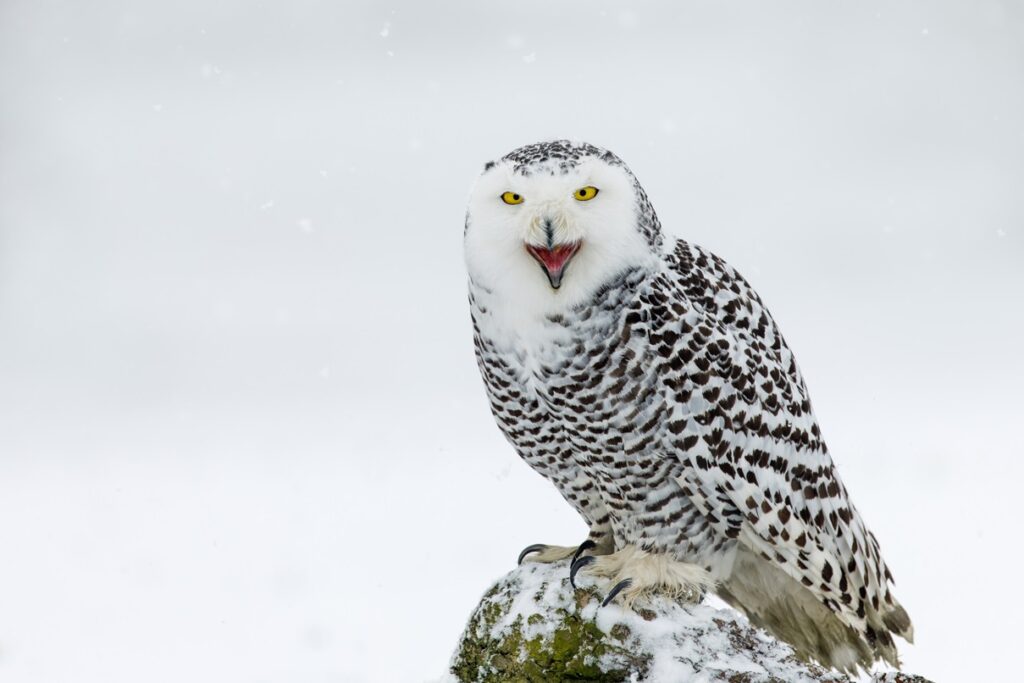Owls are characterized as solitary and nocturnal birds. They are part of the Strigiformes order that encompasses two extant families – Strigidae and Tytonidae, each referring to typical owls and barn owls, respectively.
Besides their upright, imposing stance, owls are known for the specific sound they make – the hoot. This is attributed to both essential characteristics in the bird’s life, as well as a series of symbolic meanings developed by humans throughout the ages.
The straight-to-the-point answer would be that owls hoot to claim territory, communicate, initiate mating, and fend off potential intruders. Any of the three could be the reason why you hear an owl hoot! If you want to learn more, keep reading!

Are Owls Nocturnal or Diurnal?
Before discussing the reasons behind an owl’s hooting, it’s essential to understand their behavior, as it partly explains the sounds they make. As such, are owls nocturnal or diurnal?
This is a complicated question with a complicated answer. It is known that owls adapt their schedule according to the variety of animals they can hunt on the territory they claim. As such, while a species may be primarily nocturnal, it will also be active during the day if its hunger needs dictate so or if it feels threatened.
While most owl species are nocturnal, some are diurnal or crepuscular. This, in turn, affects their hooting behavior, which is why you may hear their sounds at different times of the day.
Why Do Owls Hoot At Night?
Owls hoot at night primarily to claim their territory and defend it. The hoots are rhythmic and recurring, alerting any intruders or predators that they’re about to enter the owl’s territory.
This, however, is not the only reason why owls hoot at night. They may also hoot at night to signal danger and communicate with their partners.
Communication between partners occurs when the female is left with the owlings and the male hunts. The male will regularly hoot for the female, waiting for a reply. A hoot reply signals safety, whereas a screech signals a problem or danger.
Nocturnal owls may increase their hooting behavior during the breeding season as well. For example, the great horned owl hoots more right before egg laying, especially if males engage in courtship rituals. The hooting usually decreases in February or March when the female lays the eggs.
Why Do Owls Hoot During the Day?
The snowy owl, the northern hawk-owl, and the burrowing owl are three species in the Strigiformes order that are predominantly diurnal. This means that they are active primarily during the day. One can identify a diurnal owl species by its bright yellow eyes.
Owls hoot during the day to communicate with their peers, claim and defend their territory, signal danger, express fear, and initiate breeding. The thing is, since diurnal species are rare, it’s unlikely you’ll ever hear one. But if you do, consider yourself lucky!
You might hear owls hooting early in the morning or in the evening, as well – this means they have a crepuscular behavior. Pygmy owls, which form a genus that consists of 29 species, are primarily crepuscular. So if you hear an owl hooting at dawn or dusk, it’s likely a pygmy owl. The reason behind their hooting? Most likely any of the ones we’ve already mentioned!
What Does It Mean to Hear An Owl Hooting?
Hearing an owl hooting usually raises two questions: why does it hoot, and what does it mean to us, as the listeners? If you’re a bird enthusiast, you probably already know that the sounds owls produce are surrounded by symbolism, spiritualism, and mythological elements.
In some cultures, hearing an owl’s hoot is a bad omen, indicating that someone is going to die. This belief is still widespread, which is why an owl’s hoot is such a debated topic nowadays. Some cultures associate owls with witches as well.
Other cultures, however, regard owls as symbols of knowledge and wisdom, meaning that hearing an owl hooting isn’t a bad sign after all.
In the end, it’s no different to hear an owl hooting than to have a black cat cross your path, which is why people often get spooked when they hear an owl hooting, especially in the silence of the night!
What Owl Hoots Three Times?
If you’ve heard an owl hooting three times, it was likely a great horned owl. Its song follows this pattern: “ho-ho-hoo hoo hoo.” If the song is higher in pitch, you’ve probably heard a female.
These songs might be replaced by odd screeches, chuckles, and squawks if the owl is disturbed, angered, takes part in a courtship ritual, or has a territorial problem with others of its kind.
The great horned owl is one of the most widely distributed owl species in the Americas and is active during the night. As such, if you’re usually awake after midnight, you’ll likely hear a great deal of great horned owl hooting!
